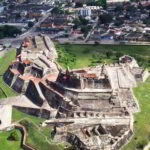Cartagena’s door knockers: symbols of history, power and tradition
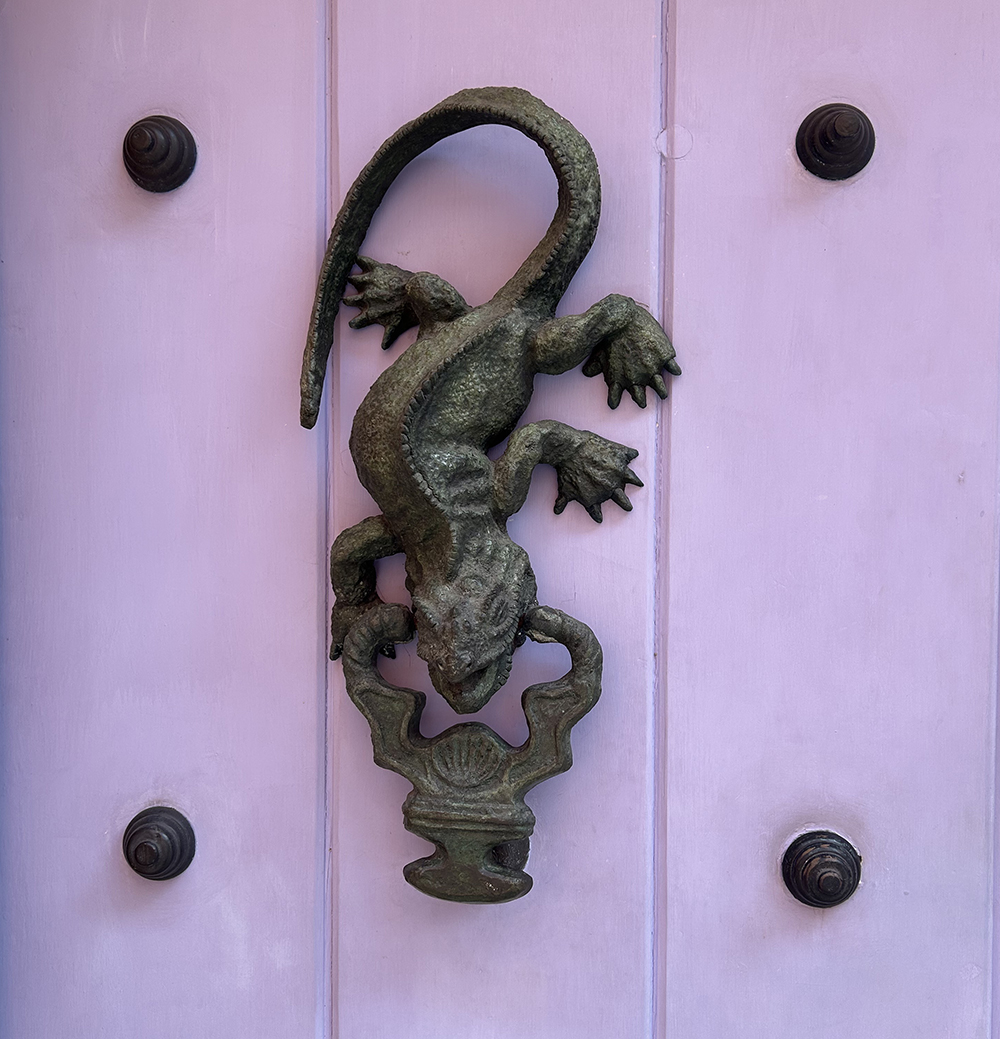
To walk through the historic center of Cartagena is to walk through more than 500 years of history. Founded in 1533, this walled city was one of the most important ports in the Americas during the Spanish colonial era. From there, riches flowed to Europe, expeditions arrived, viceroys were established and complex commercial and cultural networks were woven. It is no coincidence that it was declared a World Heritage Site by UNESCO in 1984. Among its walls, bastions and cobblestone streets, Cartagena has an impressive architectural legacy. And although its churches, squares and fortresses steal many a glance, it is the small details such as the door knockers on the doors of its colonial houses that reveal the city’s most intimate secrets.
Knockers: a silent form of storytelling
These pieces, also known as knockers, are not merely decorative ornaments. Forged in iron or bronze, the knockers reflected the social status, profession or lineage of those who lived in the house. They were silent signs of power, spirituality or connection with the environment, and over time they have become heritage symbols of Cartagena.
Meanings of the most common Cartagena door knockers
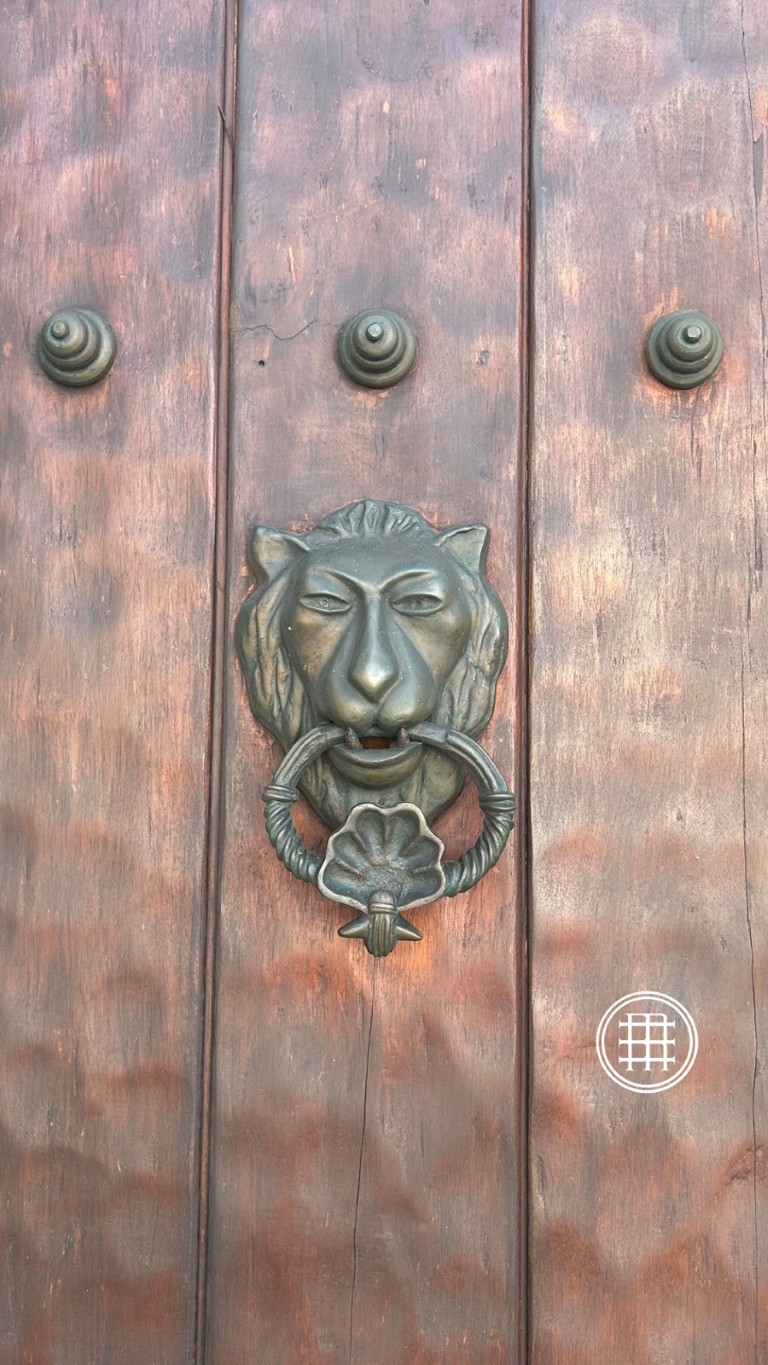
The lion
Symbol of authority and strength, frequently found in the homes of the military, royal officials or influential people. It was also understood as a symbolic guardian of the home.
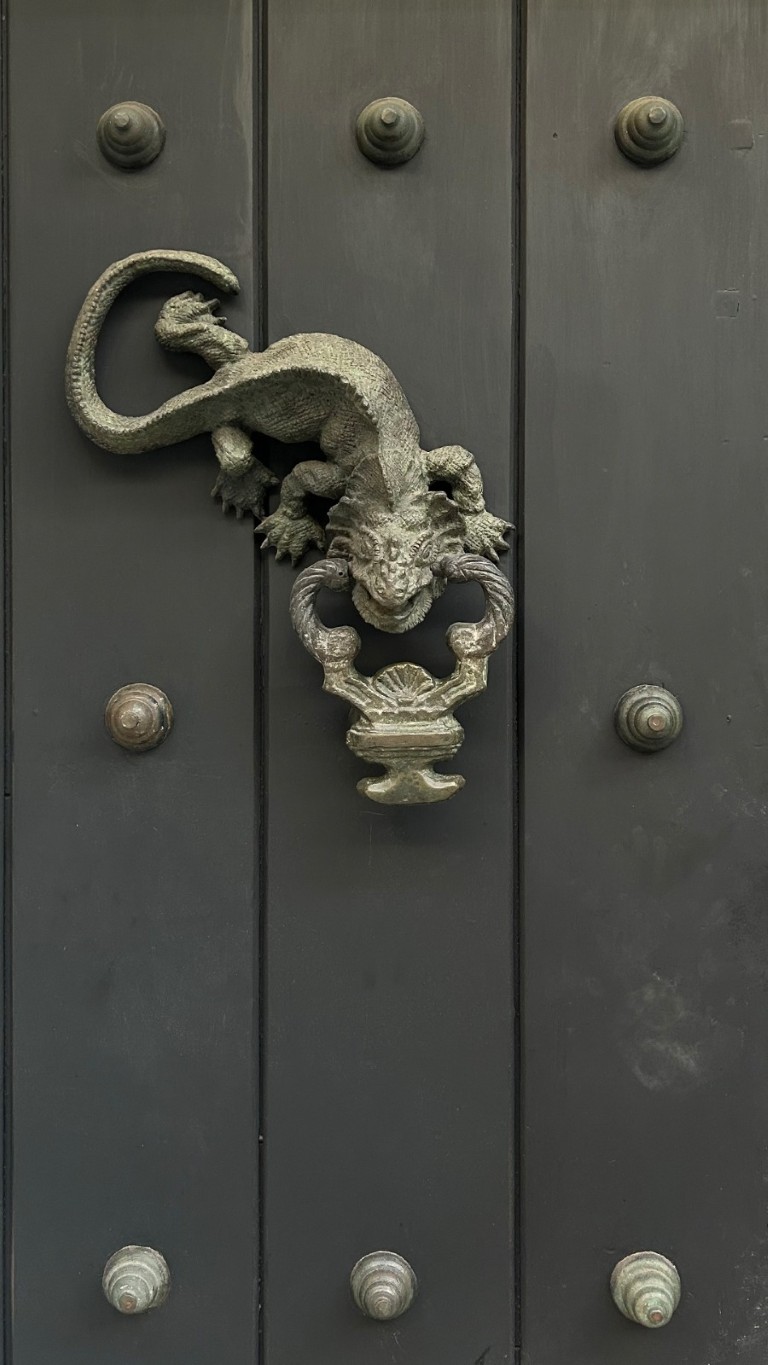
The iguana
Symbol of the nobility and distinguished families, it represented power, vigilance and a connection with the autochthonous. Although it may seem like a common animal, in this context it was an exotic, tropical and symbolically powerful figure.
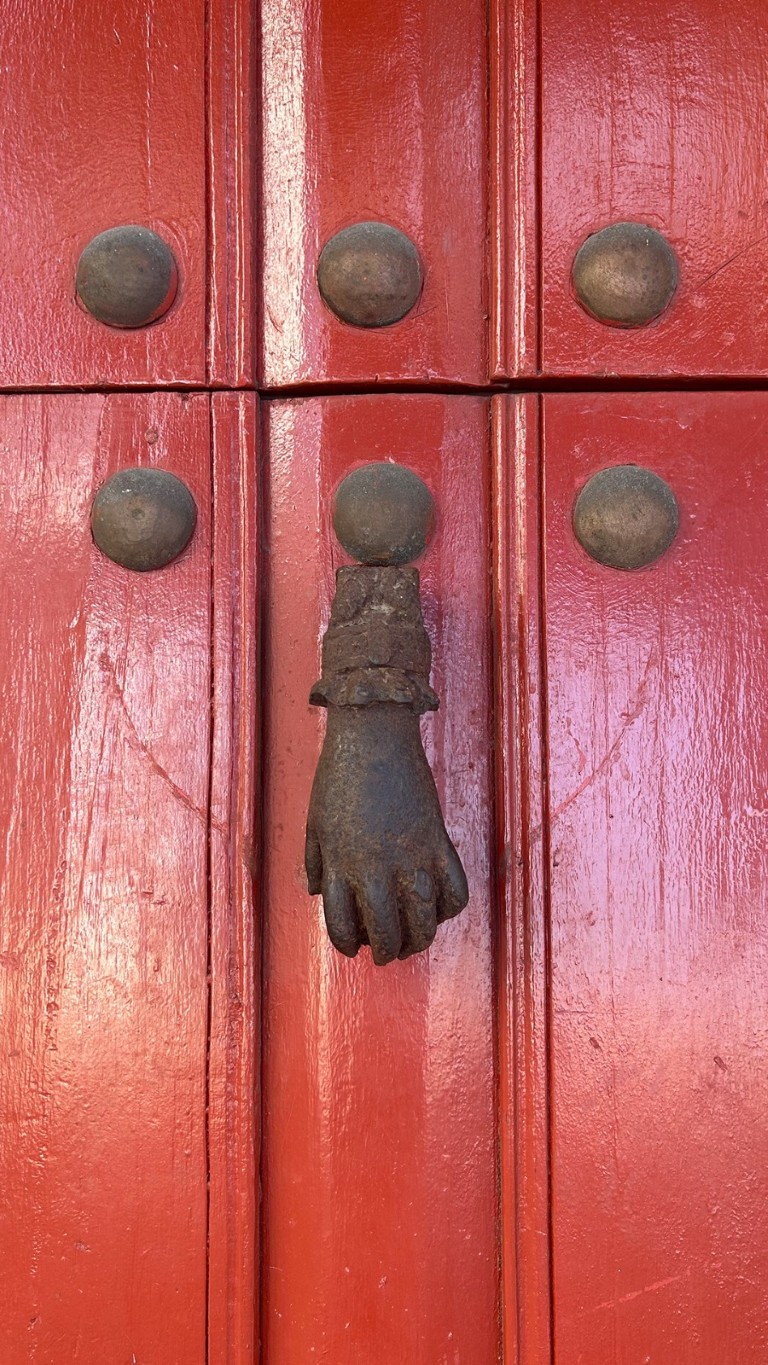
The hands
One of the most universal figures, it represents hospitality, spirituality or protection. In some cases, it is the hand of Fatima, of Arab origin, used as an amulet against evil.
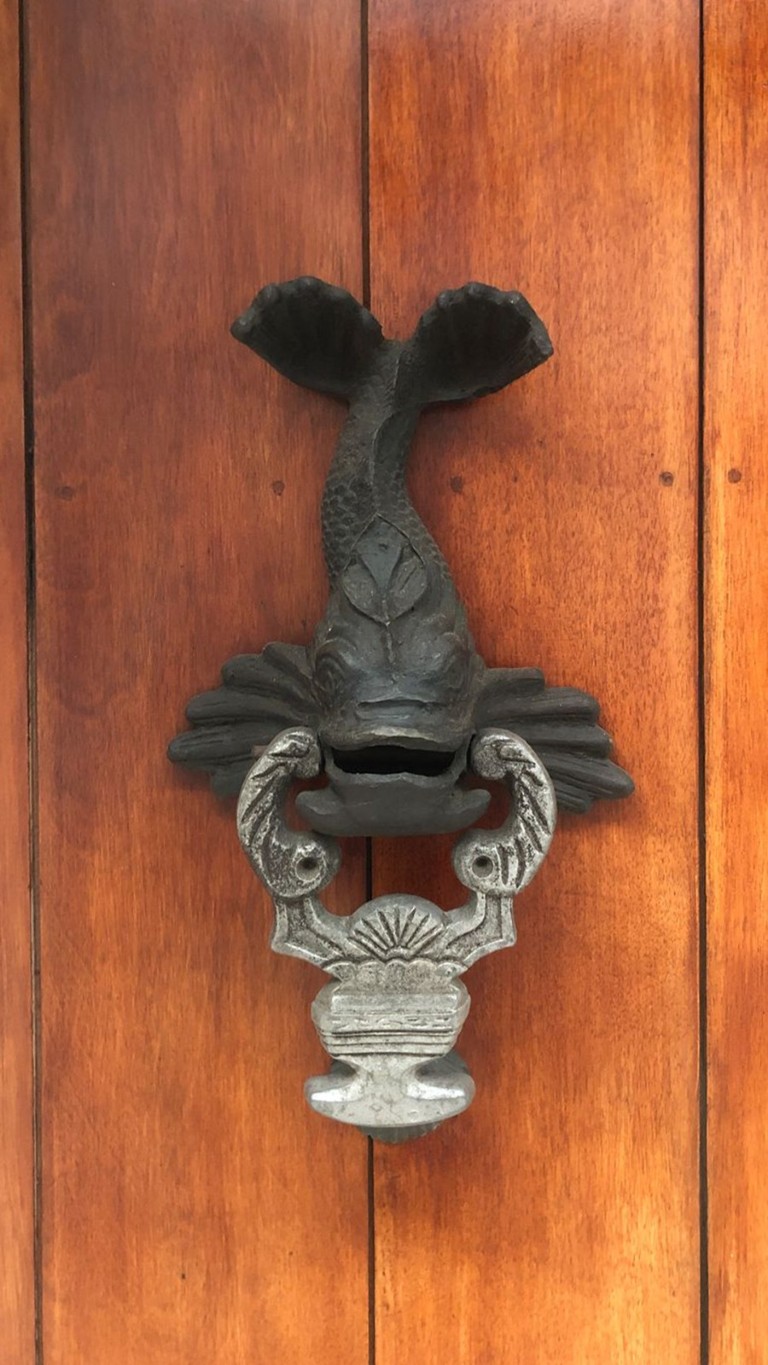
The fish
Symbol of merchants and fishermen, it represented the connection with the Caribbean Sea and the importance of maritime trade. A house with a fish-shaped door knocker used to belong to families engaged in fishing or port business.
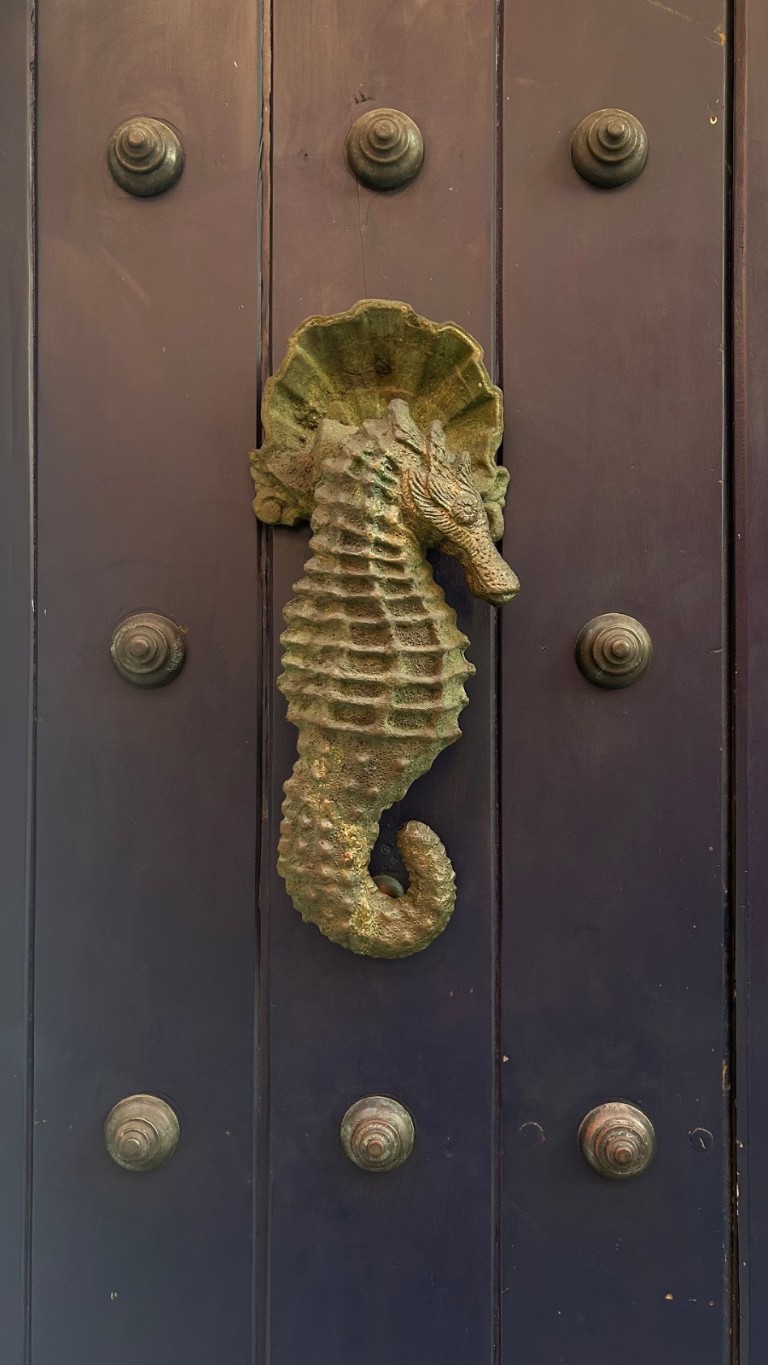
The mermaid or sea horse
Figure linked to the charm, attraction and mystery of the sea. It is usually associated with families related to the arts, navigation or with imagery brought from Europe during the colony.
More than decoration: a heritage value
Doorknockers not only served as functional door knockers; they were, and still are, a form of symbolic communication. At a time when architectural elements reflected the soul of a house, their design spoke volumes about those who lived inside.
Today, they are part of the cultural heritage of the city and are preserved as unique pieces of a living Cartagena, where history is revealed in every corner.
An invitation to look with different eyes
The next time you walk through the streets of the historic center of Cartagena, look up and observe the doors. In each knocker you will find a symbol that summarizes part of the history of the city and of those who inhabited it. And in that silent observation, you will discover that Cartagena is not only walked: it is heard, felt and interpreted in each of its details.
At Mustique Hotelsour concierges will be happy to organize for you a personalized walking tour of the historic center, where our guides will show and tell you the meaning of many of these door knockers, connecting each symbol with the history, architecture and soul of Cartagena.
Stay in a colonial house with history
Each Mustique Hotels property has been carefully restored to preserve its original character. We invite you to live an authentic experience, in intimate and elegant spaces, surrounded by the same details -such as the door knockers- that make Cartagena a destination like no other.








